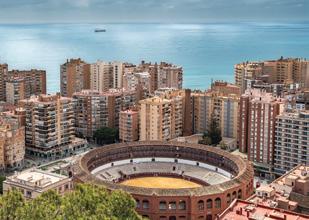

Breezethe village

FREE TO TAKE AND USEFUL TO KEEP


Letter from the Editor
Hello again and welcome…
I had a message from my bank telling me there was a suspicious attempt to use my card and I should call them. “Ha,” I thought.
“You can’t fool me with your scam messages, I’m going to ignore that.” Later, there was another text…persistent these people, aren’t they? To be on the safe side, I called the bank (looking the phone number up rather than using the one that had been sent to me). Turns out it was genuine, and they stopped my card.
This is the situation we find ourselves in with so many scams around. You start thinking that every warning is somebody trying to fool you. It is the same with all those glowing reviews on shopping sites too – is that just people being paid to say nice things?
Much as the internet and messages on mobile phones have made our lives more convenient, this is anonymous communication meaning we cannot rely on our intuition. There is no body language, eye contact or asking of probing questions when it’s all done electronically.
Still, to function as individuals and as a society, we must have a level of trust. It is the foundation of healthy relationships, collaboration and social stability.
The banks are not about to reopen branches, and online shopping is not going away. We do need to be on our guard, but next time you are thinking of spending your money, call a local advertiser. They will let you look them in the eye!
And the thought I will leave you with this month:-
“Be careful who you trust. Salt and sugar look the same. ”
Until next time…
4 home interiors with katherine sorrell
Create a gallery wall
6 books Pet Power
8 a short story by murray clarke Love at first sight
10 finance
Care home fees FAQs
12 sign of our times
Surf more safely
14 time of year
7 ways to show yourself some love
15 local update
Measham Medical Unit update
16 motoring
Review : Ford Kuga
18 travel with susannah hickling
Three-in-one : Spain
20 cook!
Moroccan lamb with dates & olives
24 gardening with caroline knight Trees, please!
28 coffee break
Grab a coffee and a biccie!
The Village Breeze is a local community magazine and business directory distributed monthly to 8,000 homes and businesses in Appleby Magna, Donisthorpe, Linton, Measham, Moira, Oakthorpe and Overseal.
Deadline for next issue 15th February, 2025
Editor
Sheila J. Bethell
General enquiries 0753 441 3055
Advertising enquiries 01283 814214
Drop us an email info@thevillagebreeze.co.uk
Read the magazine online at www.thevillagebreeze.co.uk
Create a gallery wall
Grouping pictures to hang together can create a striking decorative effect and is a great way to display your treasured memories or artefacts. Our guide will help answer your questions about hanging wall art effectively. Where should I hang my pictures?
The short answer is wherever you like. The longer answer, however, is that a wall of art is most effective in larger spaces where there is room to stand back and appreciate it. The living room is an obvious choice, but you can site much-loved pictures in any of your most frequently used rooms to enjoy them as often as possible. It could be a bedroom, the dining room, a home office or even a hallway; any favourite spot is fine, provided the work is not likely to be damaged by its location. Keep precious pieces, especially watercolours and photographs, out of direct sunlight unless protected by special glass. And bear in mind that bright light will cause reflections on glass-fronted pictures.
What is the best background?
Just as in many art galleries, neutral walls (usually white) can be a great foil for a collection of art, focusing on them without undue distraction. Some galleries have, however, turned to dark walls on which to hang their masterpieces, choosing a shade that enhances the works without overpowering them. For a countrycottage effect, you may even try hanging a group of gently coloured pictures against patterned wallpaper in complementary shades. What’s the simplest option for groups?
Undoubtedly the easiest way to hang a group of paintings that correspond in terms of size, shape and frame material (and perhaps in subject matter and colour) is to hang them in a row, a series of rows or another ordered, geometrical arrangement. The effect is formal and traditional, though this can be undercut



depending on the style of frame and the works themselves.
How can I create a true ‘gallery’ effect? If you have a more disparate collection, start by laying the pieces on the floor and assessing how they look together. If necessary, remove some, make substitutions or consider re-framing –matching or similar frames can really help to pull a less regular arrangement together. Try to see them as a whole and group them roughly into an overall rectangle or aligned on three sides. On the other hand, a completely free-form arrangement can be intriguing, though it helps if the ‘ingredients’ possess at least one common factor, which could be shape, size, colour, texture, material or subject.
How high should I hang my pictures? It’s a common mistake to hang artworks too high. When planning your gallery wall, it’s good idea to make the centre of your grouping roughly at eye level (around 1.55 metres) – taking into account the height of your ceiling and where your furniture is placed.
What about lighting?
Lighting artwork can become very technical, but it’s nice to ensure your beautiful grouping of favourite pieces can be enjoyed after dark. Custom picture lighting is the optimum choice, usually either a discreet track system, ceiling-mounted spotlights or a traditional picture light or two (depending on the size of your wall). If re-wiring isn’t an option, consider battery-operated, rechargeable picture lights, or simply position floor or table lights carefully and direct them at your artworks, avoiding glare if possible. Professionals recommend LED bulbs for their small size, low energy use and because they do not heat up. Look for bulbs with a colour temperature of 2,700 kelvins and a slightly yellowish to neutral warm white to ensure that your gallery looks its very best.

Pet Power
To mark National Love Your Pet Day, here’s a selection of books on how companion animals enrich our lives.






DOGS & THEIR HUMANS: STORIES OF HEALING & HOPE - Noel Fitzpatrick
In his 30-year career, Noel ‘Supervet’ Fitzpatrick has seen people from all walks of life come through his doors in desperate need of help. Through stories of his cases, Noel shares his unique perspective on our often uplifting and hilarious – and sometimes heartbreaking –relationships with our canine companions. Chosen by Waterstones as one of their best nature writing books of 2024.
HOW TO TRAIN YOUR HUMAN: A CAT’S GUIDE - Babas
Written from the perspective of one wise and witty kitty, this book discloses the best-kept secrets of how your cat chooses you, loves you and subtly trains you to fulfil its every wish! Translated from the Italian by Katherine Gregor and accompanied by elegant black-and-white illustrations by Andrea Ferolla.
THE INCREDIBLE JOURNEY - Sheila Burnford
Beautifully written, this sensitive story celebrates heroism and loyalty. The Hunter children must go abroad, so they reluctantly leave their Labrador, old bull terrier and dainty Siamese cat in the care of a friend. But the faithful animals only know they must get home again –somehow. So, the trio set off on a perilous journey through wilderness. But how will the domestic animals fare against the forces of nature? And will their owners be waiting for them?
THE HEALING POWER OF PETS - Marty Becker and Danelle Morton
Medical research has increasingly proven the healing effect pets can have for the ill, the elderly, the stressed-out and the emotionally disengaged. Here, vet Dr Marty Becker, co-author of bestsellers ‘Chicken Soup for the Pet Lover’s Soul’ and ‘Chicken Soup for the Cat and Dog Lover’s Soul’, shares a collection of stirring stories and medical miracles – how animals can prevent, detect, treat and, in some cases, cure a variety of maladies.
HEROIC ANIMALS: 100 AMAZING CREATURES GREAT & SMALL - Clare Balding
Ever since Alexander the Great named a city after the horse that saved his life in battle (and another after his dog), history wouldn’t be the same without the tales of amazing animals. Picking out the most heroic and heart-warming (and sometimes hilarious) animals from history – from Bobbie the Wonder Dog who travelled more than 2,500 miles to find his way home to Paul the World-Cup-predicting octopus – presenter and bestselling author Clare Balding highlights the timeless special bond between human and animal.
THE BOOK YOUR DOG WISHES YOU WOULD READ - Louise Glazebrook
Your dog is communicating with you all the time, but unless you know the signs, you aren’t picking up on what it wants you to know. In this invaluable guide, dog behaviourist, trainer and TV presenter Louise Glazebrook gives owners the skills and confidence to interpret their pooch’s needs and behaviour, and build a happier relationship for life.




Love at first sight
Whilst my wife is out of the house, I am seizing the opportunity to spend quality time with the love of my life!
With Lucy away – visiting her sick mother in hospital – Jessica and I are sitting in the bedroom. Talking. Having fun – telling jokes, and laughing hysterically like a pair of hyenas! Just enjoying each other’s company. I remember the first time I saw Jess. Seems like yesterday. It was love at first sight! My heart melted! She was simply the most beautiful girl I’d ever seen in the whole wide world! Her sparkling azure-coloured eyes, bright as the sky, watching every move I made. Her cute little smile! And her hair: so gorgeous – jet black and curly! When she laughed, well, everything around me disappeared, and I felt my spirits lifted higher and higher. In many ways, Jessica reminded me of my wife when she was younger. We formed an instant bond and became inseparable. I found myself loving her more and more each day. I could hardly wait to see her . . . to hear her speak – her small voice so kind and gentle. Her infectious laugh. I couldn’t imagine life without her.
The singer, Joe Cocker, once had a hit: “You are so beautiful to me.” I absolutely adored that song. The heartfelt words seemed so appropriate and I sang it to Jess all of the time. And still do!
Jess loves animals, and so we often visit the local
zoo together. The meercats are her favourite! She likes the way they dig their burrows deep into the soil and stand upright on their hind legs. The monkeys and gorillas are a constant source of amusement too –especially when they throw their poo at each other! Or sometimes we’ll go out for a snack – somewhere quiet where there’s just the two of us! Magical, precious moments. It’s always a race to see who can eat their ice cream the quickest! I let Jess win every time.
Unexpectedly, I hear a car pulling onto the driveway. I look out of the bedroom window. My wife has returned early! I hear a Yale key turn in the lock, and the front door opens – followed by the sound of her footsteps on the stairs.
‘Quick, Jess!’ I whisper. ‘Hide!’
‘Where?’ she says, with mock horror on her face.
‘Under the bed, my sweet girl! Hurry!’
Jess laughs and hastily tucks herself out of sight. The bedroom door opens. ‘Where is she?’ inquires Lucy, glancing around the room.
‘Who?’ I reply, innocently.
‘I know she’s in here somewhere . . . Is she hiding behind the curtains?’ Looks.
‘No! Maybe in the wardrobe?’ Looks.
‘No! Behind that box of toys?’ Looks again.
‘No, not there either!’
Then we both hear a small giggle.
My wife spins around. ‘I wonder if she’s under the bed?’ She rushes forward, and, bending down, pulls her out.
‘Has my little daughter been good whilst I went to see Granny?’ Lucy asks, tickling Jess’s tummy mercilessly, and making her giggle even more. ‘Grandma’s much better, by the way.’
I scoop up our darling three-year old child into my arms and cuddle her. ‘She’s been a perfect little angel, Mummy. Haven’t you Jess?’
Still the love of Daddy’s life!





Care home fees FAQs
You or a loved one might be considering residential care. Fees can be expensive, so it pays to get the answers you need well in advance.
How much does a care home cost?

Straightforward residential care can set you back upwards of £60,000 a year and a nursing home more than £70,000. Some areas are more expensive than others, especially London, the southeast and the south-west.
How do I pay?
Unless you have savings and assets of less than £23,250 (£35,000 in Scotland and £50,000 in Wales), you will be expected to fund all your care. After that your local council steps in. You will have to use your savings first and may have to sell your home. Your income goes towards your care, too, including state and occupational pensions. Benefits, including Attendance Allowance, can be used to offset care home fees, so apply for any you’re entitled to.
If you require nursing care, you may be eligible for NHS Funded Nursing Care, which reduces fees further. For very complex needs, it’s worth having an assessment for NHS Continuing Health Care, which pays for the entire care element. But, be warned, the bar is set very high and you may not get it. Many people with dementia do not.
It may be worth considering purchase of an immediate needs annuity (also known as an immediate care plan) if you need care straightaway and have plenty of money available, for example, from selling your house. This is a type of insurance policy that gives you a regular income for life and it’s tax-free when paid to the care provider.
What about my home?
If you’re not keen to sell and you lived in your home alone, you may be able to use it to help keep you in care. Consider renting it out, though the property will still need to be managed and maintained. Alternatively, if you’re below the threshold for selffunding apart from the value of your property, you
can enter into an arrangement with your local council, called a deferred payment scheme. The local authority will pay for your care and be reimbursed from the sale of your property when you die. There are arrangement fees and interest payments, however, and you’ll still have to pay for your home’s upkeep.
What happens when the council steps in?
Once you get close to the selffunding threshold, you need to get in touch with your local authority’s adult social care department. They will arrange a care needs assessment, followed by a financial assessment before they will pay any care fees. You will have to produce evidence of any assets, savings and income. If you own your own home, the council will not include its value for the first 12 weeks of care.
What’s exempt from the means test?
If your partner, or a relative who is disabled or over 60 lives in your home, the local authority won’t include it in the financial assessment. The council will only count half of other jointly held assets or savings. Possessions are ignored too. But a word of warning: suddenly buying yourself a Picasso or a Lamborghini, giving away money or making expensive gifts, including your home, might be seen as deprivation of assets. This means they could be treated as if they still belong to you. There are scary stories of relatives having to pay back gifts of cash.
How can I plan ahead?
It’s important to look at what you earn and own well before any possible need for care. A solicitor or a financial adviser can help with that.
You could consider relocating to an area where care home fees are cheaper. But that’s a big upheaval when you’re getting older, so it’s not always practical. If you want to treat yourself or others, do it while you’re still healthy and independent. To avoid accusations of deprivation of assets, it’s important you can show the council that your extravagance predated any knowledge of your need for care. But if you can buy art, jewellery, a wine or watch collection, or a classic car to leave to your loved ones when you die, why not? Or splash your cash on lavish holidays while you can. Eat, drink and be merry – for tomorrow we may need a care home!
The information in this article is for informational purposes only and is not intended to be personal financial advice. Always seek professional advice on money matters.

Expert advice for protecting yourself online...
SURF MORE SAFELY

Another day, another scam – internet rackets seem to be everywhere, trying to trick you into handing over your money or handing over details that can be used to get your money.
TRICKS OF THE TRADE
There are many different ways. Some scammers create fake but convincing versions of official websites, such as banks or the taxman, or by setting up fake shops that are advertised on social media. Some do it on dating apps, gaining people's trust before coming up with a sob story and asking for financial help. And others do it with dodgy items on auction sites that aren't what they claim to be. Most commonly, online fraudsters con people with messages or emails designed to get them to click on a dodgy link. That link will pretend to be a site like PayPal or eBay, asking you to sign in; when you do, the scammers have your login details for the real versions of those sites and can cause serious financial damage.
There have recently been lots of spurious emails pretending to be from Royal Mail and from courier
A.I. CAN LIE
firms asking for payments for deliveries that don't exist. There has also been a proliferation of dodgy online shops on social media selling mountain bikes, musical instruments, sunglasses and designer clothes for prices you'll never see in any legitimate store.
HOW TO STAY SAFE
It's wise to be suspicious online and to never click links in emails no matter how official they seem. Be suspicious of unsolicited phone calls too, especially any that ask you to confirm personal information.
Don't use the same passwords on multiple websites, or use passwords that are easy to guess. Your phone and your web browser make it easy to generate strong passwords and store them safely so you won't forget them.
Keep an eye on your banking app for any unusual transactions; if you see anything, call your bank straightaway.
You can find out more about safer internet usage at the UK Safer Internet Centre: www.saferinternet.org.uk
One of the scariest developments in online fraud is artificial intelligence – AI for short. It can be used to create very convincing but fake photos, write in the style of other people and even copy people's voices: there have been examples of AI-generated voices being used to mimic people's children in scammers' phone calls.
Be careful what you share online so that scammers can’t use that information to pretend to know you or be you. Agree on a safe word or phrase with your family. This gives you a chance to verify their identity if you get a call that feels suspicious. And, if you can, step away from the PC or phone for a minute or two when faced with an unusual message or call; that’s often enough just to help you realise it’s not real.




Measham Medical Unit Update
We would like to wish you all a healthy and good new year from all at the PPG and Measham Medical staff. We met up on 6th January for our AGM and there was good attendance. Collective action from the partners continues into 2025. This is not a strike or industrial action and the Measham GP practice is still required to be open between 8am and 6.30 pm Monday to Friday. The decision to take this action is due to GPs concern re inadequate funding to enable them to provide the best standard of care for their patients. Further to this, recent statistics from a current audit have shown Measham have in the region of 15,700 patients registered. Guidelines say minimum expected appointments is 70 per 1000 per week and Measham was seeing 131 per 1000 per week. In December the GPs and some PPG members met our local MP Amanda Hack. Discussions were frank and informative.
We would like to welcome Dr Hussain and Dr Kent to MMU. Dr Hussain will be working all day on a Monday and Tuesday and Dr Kent will be working Wednesday mornings and all-day Thursday and Friday.
The Rapid Health booking system for over 16’s commenced late November. This is a trial for this current year and already has shown a 50% reduction in early morning pressures on the phone system therefore allowing staff to deal with other patient issues. This new system is in its early stages and the GPs are tweaking any problem and will liaise with rapid health, re: any concerns.

Review : Ford Kuga
The Ford Kuga has become a go-to choice for those looking for an engaging compact SUV.
WHAT IS IT?
The Ford Kuga has been around since the late noughties as a compact SUV and, since then, has grown in size, gained more on-board tech and become a go-to choice for those looking for an engaging family car.
The third-generation model, released in 2020, received a midlife makeover in 2024 to help it compete with Kia and Nissan.
WHAT’S NEW?
Externally, there’s a gloss black grille, new wraparound headlights and light bar. The ride height has increased, though this is still very much a road-focused SUV.
Inside, the old eightinch touchscreen has been replaced with a 13.2-inch infotainment display. The updated instrument cluster has increased in size to a 12.3-inch digital display.
WHAT’S IT LIKE TO DRIVE?
The Kuga impresses in a lot of areas. It’s very relaxing on a long trip and the cabin is nicely insulated from road and wind noise. At speed, the car performs well and is quiet.
Fuel economy is excellent, too, with our plug-in hybrid test car averaging 60mpg whether in town or on the open road.
On a twisty road, the handling is precise, has a good feel and there isn’t too much body roll considering the Kuga is quite tall. In town, the plug-in hybrid system needs little input from the petrol engine.

WHAT’S UNDER THE BONNET?
The Kuga is available with petrol, hybrid and plug-in hybrid powertrains.
We’ve been testing the plug-in hybrid version that comes with a 2.5-litre Duratec petrol engine mated to a CVT automatic gearbox and a 14.4kWh battery pack, giving a 35-mile range on electric driving alone. Overall power comes in at 239bhp, allowing this SUV to do 0-60mph in 7.1 seconds and a top speed of 125mph.
The controls are easy to operate and visibility is excellent thanks to the large windows. However, the thick b-pillars do obstruct your view of other cars on motorways. Also, when driven hard, the engine and CVT gearbox start shouting and screaming.
HOW DOES IT LOOK?
From any angle, the Kuga is a good-looking car. Our Active model, with its lifted suspension and plastic wheel arch trims, came with the optional Bursting green paintwork, which makes it really stand out.
The side profile is housed by lower body mouldings finished off in silver trim and the gloss black roof bars and roof match the front grille colour, too.
WHAT’S IT LIKE INSIDE?
Inside is a mixed bag. It’s a stylish, minimalist affair, but you’ll find hard scratchy plastics on the rear door panels, glovebox and centre console.
On the flip side, there’s plenty of space inside, with a vast amount of head and legroom for rear-seat
passengers. There are large door bins and the cupholders are a decent size but it’s a shame the centre storage bin and glove box are a little small. The touchscreen interface looks great and is fairly easy to use. However, Apple CarPlay struggled to connect to devices or adjust volume.
Our plug-in hybrid model has a smaller boot at 628 litres than the normal hybrid to make way for its batteries, but it’s still bigger than a Nissan Qashqai or Kia Sportage. Fold the seats down and the space extends to 1,534 litres.

WHAT’S THE SPEC LIKE?
The Kuga comes in plenty of permutations that offer a lot of standard equipment, with Titanium, ST-Line, Active and ST-Line X.
Our Active model is priced from £38,965 and gives you lifted suspension, black mirror caps and roof, 18inch diamond-cut alloy wheels, and part leather and Alcantara seats.
The flagship ST-Line X is yours for £39,705 and offers a heated steering wheel and seats front and rear, 19inch alloy wheels and an electric sliding glass sunroof.

VERDICT
The Kuga’s facelift has improved the looks and onboard tech. It has excellent handling and refinement, as well as making good use of its space. The plug-in hybrid model is also very economical and its electric driving range isn’t bad. Cheap-feeling plastics aside, it’s a great all-rounder that should be on your shopping list if you’re in the market for a midsize SUV with green credentials.



Three-in-one
Steeped in rich history and rugged beauty, the Spanish region of Andalusia is a perfect choice for a summer holiday. Within a few hours' drive, you can visit three of the region’s most majestic cities – Seville, Granada Málaga. While close together, they each offer different cultural experiences and specialities.
From free tapas in Granada to Málaga’s thriving art scene, here’s what makes each city stand out.
SEVILLE
Start by flying into Seville, the gleaming jewel of Andalusia’s cultural crown. The buildings within Seville’s compact Casco Antiguo (Old Town) are some of Spain’s greatest architectural treasures, providing a flavour of the city’s rich Muslim and Catholic historical legacy. Highlights are the world’s largest Gothic cathedral and the jaw-dropping Real Alcázar – the oldest royal palace in Europe still in use today. When evening falls, the streets come alive with flamenco. This Spanish art form is a key feature of any Andalusian city, but Seville is home to some of Spain’s most famous flamenco singers. There are at least a dozen tablaos in Seville that hold nightly shows, but you can also catch an impromptu performance at many more spots around the city.
GRANADA
Standing at the foothills of the Sierra Nevada mountains, Granada lies 150 miles east of Seville. The city was under Islamic rule for hundreds of years, so there’s a strong Moorish legacy here; nowhere

can this be felt more strongly than in the Alhambra, a majestic fortified palace complex that overlooks the city. Granada is also known for its Arabic baths, so after a day exploring the Alhambra, unwind at the Hammam Al Ándalus, where you’ll rotate through serene candlelit baths of different temperatures. Sundown is a special time in Granada. Mirador de San Nicolás is the most popular sunset spot, promising mesmerising views of the Alhambra as it basks in the soft light against a backdrop of mountains. Granada is also one of the last cities in Spain that offers free tapas whenever you buy a drink – the perfect end to a perfect visit.
MÁLAGA
Last on the map is Málaga, a city blessed with nearconstant sunshine and sandy beaches within strolling distance.
Málaga has a rich 2,800-year history, leaving behind a Roman theatre and the magnificent Alcazaba Fortress – a vast stone citadel built by Moorish settlers. More recently, Málaga has been revitalised with a swathe of art galleries, independent boutiques and an edgy new creative quarter.
Shopping is a big deal here, so carve out some time to stroll down the dazzling Calle Larios. The city is also home to over 20 museums, many of which are dedicated to the arts. The Picasso Museum Málaga showcases more than 200 of the artist’s works, curated into exhibitions that provide an insight into his artistic process.
SEVILLE | GRANADA | MÁLAGA



Moroccan lamb with dates and olives









The state of social media
AFTER X
A new destination for those in search of an online community?


X, the social network formerly known as Twitter, suffered a mass exodus after the US elections late last year – and it looks as if many of those people have set up social-media home on Bluesky (bsky.app). It looks and works much like Twitter but isn't owned by Elon Musk and doesn't decide what posts to show you. That means it's a little quiet until you start following people but, at the time of writing, more than 20 million people now call it home and it feels busier than the rival social network, Threads, which is owned by Facebook's parent company Meta.
THE STATE OF DATING


Where to swipe right for your Valentine. Love is in the air this month and there's never been a wider choice of online dating apps. According to Ofcom, the UK's most popular dating app remains Tinder, with nearly 2.5 million UK users as of 2024; Hinge, the second most popular, has just over 1.5 million and third-place Bumble has 1.44 million. Ofcom says Hinge is most popular with 18- to 34-year-olds, while the Ourtime app for over 50s is mostly used by over 55s – although interestingly Ofcom says Grindr, the LGTB dating app, is the most popular app for that age group. It points out that many people use multiple apps. Online dating is also increasingly being used to find platonic friendships rather than romantic ones: Bumble and Hinge both enable you to look for pals, not partners.









SHOULD TEENS BE BANNED?
The Government is looking at ways to keep young people safe online.


There are growing calls for teens' social media use to be restricted. Australia is proposing to ban under 16s from using social media and here in the UK ministers are looking into it too. Technology secretary Peter Kyle has said, "There's nothing I take off the table when it comes to keeping children, women and girls safe in our society. I'm looking at the international evidence." There appears to be strong support for restrictions on teens' internet use but some firms are taking action already: Instagram now puts many more limits on what teenage users can do and who they can share content and messages with.



Trees, please!
February is often one of the coldest and dullest months of the year, when days are still short. At this time, a gardener’s footsteps can do more harm than good. It is, however, a great opportunity for thinking about some practical improvements which could help transform your space. One of these is the exciting prospect of planting a tree. February is well within the bareroot season and prices are as low as you’re likely to find.

Ground
work
A garden without a tree feels strangely lacking in purpose, though many people worry there isn’t enough room in a small space. Be reassured, there are shrubs and small trees that are perfectly suited to little plots but you need to be mindful of potential damage to hard surfaces and buildings.


It’s important to choose the right tree for the space and undertake the right preparation. Tree roots tend to take the path of least resistance and need space underground to prevent root heave, where roots push up paving above. Do your research regarding aspect, soil and conditions, then prepare the soil well so roots don’t congregate at the surface.
Measuring up
The amount of space which is generally adequate between a tree and a building is around two thirds of the maximum height of the mature tree. Some trees have more vigorous roots than others and certain roots are naturally shallow, so the species should always be taken into account. A tree specialist should be consulted for more accurate advice. And remember that a root barrier will allow trees to be planted closer to buildings.
Other factors such as loss of light and debris from falling leaves, seeds or fruit should also be taken into consideration when choosing a tree.
Small beautiful trees
1. Acers. Ensure you select an appropriate variety. Some Japanese Acers measure under two metres at maturity, but other maples, as they are often known, can grow to 40 metres! Do your homework, and give Acer palmatum a site in partial shade for the best performance.
2. Amelanchier. This large shrub, also known as the Juneberry or snowy Mespilus, provides interest over different seasons, making it an excellent choice.
Amelanchier
Acer Palmatum
Weeping Cherry
3. Crataegus. Hawthorn trees are an ancient species commonly found in hedgerows. There are also cultivars with pink and red blossom which make ideal garden specimens. Birds love the berries.
4. Euonymus. The native spindle is a remarkable large shrub which has fiery autumn foliage and beautiful fruit. Its pink berries burst open to reveal orange seeds. Loved by wildlife, the cultivar E. ‘Red Cascade’ is wonderful for gardens.
5. Malus. The crab apple is ideal for many small gardens, with spring blossom and edible fruit coveted by birds. It’s an all-round winner for wildlife.

6. Prunus. Who doesn’t love a flowering cherry in spring? Check the height and spread if it’s for a small garden, as some can grow into a mediumsized tree.
Reduce your workload
Was your garden too demanding on your time and ability last year, resulting in abandoned tasks and frustration? This is a good moment to think about your upcoming workload. Many people employ help outdoors during the growing seasons, and often all year round.
The easing of a burden can be a very positive move and give you more enthusiasm. Consider contracting out your least enjoyable tasks. Do you detest mowing the lawn or cutting hedges, for example? Cleaning the patio and paths is another job you might prefer to be without. This is the perfect time to organise someone to help take the strain. It could transform your gardening year.

COMMUNITY GARDENING GROUP
DON'T KNOW ONE END OF A SPADE FROM ANOTHER?
Whether you do or not, you would be welcome at our friendly community gardening group. Formed initially as one of Measham Medical Unit’s Social Prescribing groups, we aim to offer exercise and social contact as a means to bolster physical and emotional well-being and improve our public spaces at the same time. We currently look after 3 sites in Measham, meeting on a Monday at 10am, to work until 11.15am or so, when we head to the Age UK Cafe on Measham High St for tea and biscuits. (Own cost : £1)
Some members also tend an allotment in Appleby Magna — organic, zero air miles, fruit and veg!
Call or text Linda on 0745 299 1949.
ASHBY u3a AFTERNOON TALK WITH...
GILL DWYER
Talk about 'Healthy Lives for Longer'
Gill Dwyer is a recent appointee to Healthwatch Leicester with a wealth of knowledge on the subject of keeping healthy in older age. She will take us through some of the top tips to remain active and healthy. Come along to the Congregational Church, Kilwardby Street, Ashby-de-la-Zouch LE65 2FQ [Look out for our flag on the pavement outside] on Tuesday 25th February. Doors open at 1.30pm for 2pm start. Tea, coffee and biscuits will be available – along with a warm welcome. Why not come along as our guest for a ‘taster’ visit? In addition to our monthly talks we also have in excess of 30 different interest groups, come and see what it's all about.
For more information visit: ashbyu3a.co.uk
email: members@ashbyu3a.co.uk
Facebook: facebook.com/Ashby u3a
Crab Apple Blossom


Why am I cold?





Paddy power
Comedian, actor and TV presenter Paddy McGuinness’ story is one of rags-to-riches: from sleeping in abandoned cars to racing supercars on TV’s ‘Top Gear’.
A two-up, two-down terrace in Bolton was home to the young Patrick Joseph McGuinness. Raised by his hard-working single mother, Patricia Leonard, Paddy slept on a mattress and aged 17 was juggling a college course and two jobs to support his beloved mum. However, he has often reflected warmly on his childhood: “It’s a bit clichéd, but we were poor, but we were happy.”
Stand up to scrutiny
A much-loved presence on British TV, Paddy has also sold out hundreds of venues on his comedy tours. His long-awaited return to stand-up, ‘Nearly There’, will see him perform 40 dates across the UK. Said Paddy: “It’s been eight years since my last tour and there’s lots of things to laugh about! I‘m looking forward to getting back in front of a live audience, along with running the gauntlet of cancel culture, click bait and fake news!”
A friend in need
It was while a pupil at Mount St Joseph Secondary School in Farnworth that he became mates with Peter Kay. Later Paddy would accompany the comedian to open mic nights at Manchester’s Frog and Bucket Comedy Club and decided entertainment was a better way to earn money than labouring and occasionally sleeping in cars.
Peter invited him to appear in his TV shows, ‘That Peter Kay Thing’ (2000), ‘Phoenix Nights’ (2001) and

‘Max and Paddy’s Road to Nowhere’ (2004).
No looking back
He has also presented TV shows such as BBC’s ‘Top Gear’, dating game show ‘Take Me Out’ and ‘A Question of Sport’, not forgetting his weekly Sunday morning show on BBC Radio 2 nor his recent BBC1 series, ‘Paddy and Chris: Road Tripping’, with fellow former ‘Top Gear’ presenter Chris Harris. The series followed the duo on an epic road trip across Europe seeking out secrets of ageing well.
So what did 51-year-old Paddy learn? “There are some moments where we both really do some soul searching and think about how we can make the most of the years ahead of us.”
Putting family first
In 2011 Paddy married Christine Martin, who became a star of ‘The Real Housewives of Cheshire’. The couple have three children, 11-year-old twins Penelope and Leo, and eight-year-old Felicity. All three children are autistic, as is mum Christine. Paddy and Christine split in 2022 but the family still lives together in Paddy’s £2.5m, seven-bedroom family home in Cheshire, so as not to disrupt the children’s lives.
Lifey well lived
The year 2021 saw the release of Paddy’s acclaimed autobiography, My Lifey (published by Ebury Press, £20 hardback, £9.99 paperback), billed as having “mischief and misadventure, joy and sorrow, huge success and unexpected challenges.”



